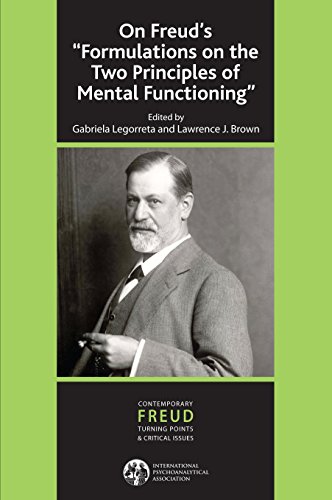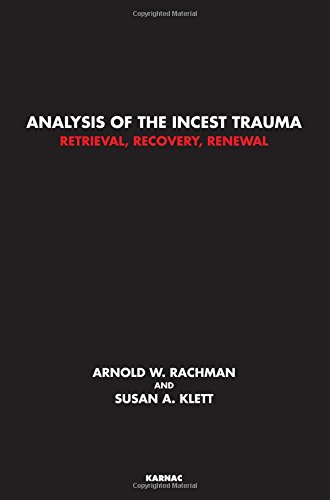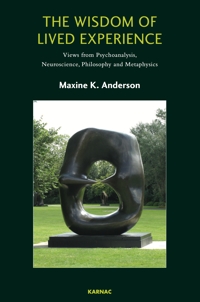Psychoanalysis Books
Guilt: Origins, Manifestations, and Management
Guilt: Origins, Manifestations, and Management is replete with clinical pearls and highly useful tips for the management of patients driven by feelings of guilt and remorse. Eight distinguished... (more)
The Work of Psychoanalysis: Sexuality, Time and the Psychoanalytic Mind
Psychoanalysts working in clinical situations are constantly confronted with the struggle between conservative forces and those which enable something new to develop. Continuity and change, stasis... (more)
Reclaiming Unlived Life: Experiences in Psychoanalysis
In Reclaiming Unlived Life, influential psychoanalyst Thomas Ogden uses rich clinical examples to illustrate how different types of thinking may promote or impede analytic work. With a unique style... (more)
Creative Listening and the Psychoanalytic Process: Sensibility, Engagement and Envisioning
Contemporary psychoanalytic thinking about the interdependence of subjectivity and intersubjectivity has reenvisioned the analytic process, and with it the very nature of creative and engaged... (more)
Dialogues with Children and Adolescents: A Psychoanalytic Guide
Psychoanalytic work with children is popular, but the sophisticated language used in psychoanalytic discourse can be at odds with how children communicate, and how best to communicate with them.... (more)
The Psychoanalytic Craft: How to Develop as a Psychoanalytic Practitioner
Why is developing as a psychoanalytic practitioner so often laden with anxiety? A simple answer is that psychoanalytic work is intrinsically complex and difficult. But Laurence Spurling argues... (more)
The Fictions of Dreams: Dreams, Literature, and Writing
The Fictions of Dreams explores the close connection between the narrative nature of dreams and the narrative devices employed in literature and creative writing. The book is unique in its... (more)
Ethics of Evil: Psychoanalytic Investigations
In today’s world where every form of transgression enjoys a psychological motive and rational justification, psychoanalysis stands alone in its ability to uncover the hidden motives that inform... (more)
Confessions from the Couch: Psychoanalytical Notions Illustrated with Extracts from Sessions
The unconscious? The Oedipus complex? The castration complex? Neurosis? The objet a? What are they? And what does one say to an analyst? What happens during an analysis?
For those asking... (more)
Forced Endings in Psychotherapy and Psychoanalysis: Attachment and Loss in Retirement
Forced Endings in Psychotherapy and Psychoanalysis: Attachment and Loss in Retirement explores the ambivalence the therapist may feel about letting go of a professional role which has sustained them.... (more)
The Logics of Madness: On Infantile and Delusional Transference
In this book, Salomon Resnik describes his psychoanalytic work with psychotic patients and the logic that underlies their often-delusional constructions. He explores how the concept of psychosis has... (more)
The Social Unconscious in Persons, Groups, and Societies: Volume 3: The Foundation Matrix Extended and Re-configured
In this book the authors develop the theory of the tripartite matrix, consider music as a form of non-verbal communication as a sub-dimension of the matrix, and to present empirical studies of the... (more)
Tea with Winnicott
Donald Winnicott is currently the most popular author in contemporary psychoanalysis. His writings are cited in bibliographies even more frequently than those of Sigmund Freud. And yet how many... (more)
The Legacy of Sandor Ferenczi: From Ghost to Ancestor
The Legacy of Sandor Ferenczi, first published in 1993, was one of the first books to examine Ferenczi's invaluable contributions to psychoanalysis and his continuing influence on contemporary... (more)
On Freud's ''Formulations on the Two Principles of Mental Functioning''
This book is a collection of papers by leading contemporary psychoanalysts who comment on the continuing important relevance of Freud’s (1911) paper, Formulations on the Two Principles of Mental... (more)
The Shadow of the Second Mother: Nurses and Nannies in Theories of Infant Development
The Shadow of the Second Mother explores why has there been such little interest, in psychology, social history and biography, in the important contribution that "second mothers", such as wet nurses... (more)
The Oedipus Complex: Solutions or Resolutions?
Freud’s theory of the Oedipus complex is seminal to psychoanalytic theory, but often ignored because of failure to appreciate the nuances. This book seeks to demystify this fascinating topic by... (more)
The Collected Papers of Roger Money-Kyrle
Thirty-five papers from a variety of technical and intellectual journals trace fifty years of distinguished service to psychoanalysis, sociology, politics and anthropology. (more)
The Good Divorce: A Psychoanalyst's Exploration of Separation, Divorce, and Childcare
Divorce is a complicated process and not a single event. It has major life implications and must be done right. In this regard, the good divorce is an ethical divorce.
The Good Divorce does not... (more)
Psychic Suffering: From Pain to Growth
This book creates an awareness of our ‘excessive’ fear of mental pain: the ubiquitous abhorrence of inner distress functions as a gravitational force that may ultimately impede both maturation and... (more)
Inquiries in Psychoanalysis: Collected Papers of Edna O'Shaughnessy
The papers of Edna O'Shaughnessy are among the finest to be found in psychoanalytic writing. Her work is unified not so much by its subject matter, which is diverse, but by her underlying... (more)
Analysis of the Incest Trauma: Retrieval, Recovery, Renewal
Childhood sexual abuse within the family of origin and society's institutions, such as the church, education, sports, and the world of celebrity, has been neglected as a significant issue by... (more)
Formless Infinity: Clinical Explorations of Matte Blanco and Bion
In contemporary psychoanalysis, a key concept and aim of clinical practice is to distinguish the boundaries of any mental state. Without this boundary-setting, the patient has nothing but the... (more)
Minding the Body: The Body in Psychoanalysis and Beyond
Minding the Body: The Body in Psychoanalysis and Beyond outlines the value of a psychoanalytic approach to understanding the body and its vicissitudes and for addressing these in the context of... (more)
Body-States: Interpersonal and Relational Perspectives on the Treatment of Eating Disorders
In this edited volume, Jean Petrucelli brings together the work of talented clinicians and researchers steeped in working with eating disordered patients for the past 10 to 35 years. Eating disorders... (more)
Basic Psychoanalytic Concepts on the Theory of Instincts
Originally published in 1970, this volume describes in condensed but detailed form Freud's development of the theory of instincts. As is well known, Freud reformulated and amplified his theory of... (more)
Basic Psychoanalytic Concepts on the Theory of Dreams
It is generally accepted that among Freud's many contributions to the understanding of the normal and abnormal aspects of mental functioning, The Interpretation of Dreams stands alone and above all... (more)
Basic Psychoanalytic Concepts: Four Volume Set
This 4-volume set, originally published between 1969 and 1970, traces the basic psychoanalytic concepts evolved by Freud. Each volume takes a single theme in Freud’s thought and gives a concise but... (more)
The Wisdom of Lived Experience: Views from Psychoanalysis, Neuroscience, Philosophy and Metaphysics
In our quest toward truth we often rely on the guidance and clarity of conscious thought, but in doing so we may bypass awareness of a more deeply informing resource, which is embodied in lived... (more)
Psychodynamic Psychiatry in Clinical Practice: Fifth Edition
It is difficult to improve on a classic, but the fifth edition of Psychodynamic Psychiatry in Clinical Practice does just that, offering the updates readers expect and a deft reorganization that... (more)































